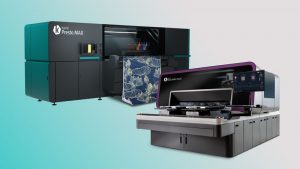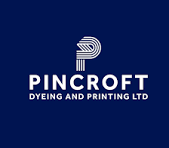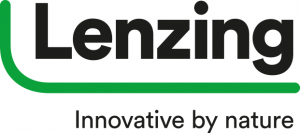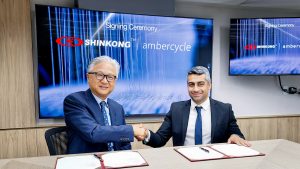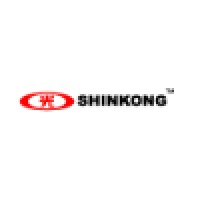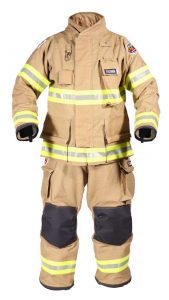 To best protect communities from the threats of structure fires, local firefighters need access to the right gear. Here’s how new gear programs can help improve rapid response, offer premium protection, and have a positive community impact.
To best protect communities from the threats of structure fires, local firefighters need access to the right gear. Here’s how new gear programs can help improve rapid response, offer premium protection, and have a positive community impact.
By Lauren Burke DeVere
The right equipment and protective clothing are essential for ensuring the safety, health and effectiveness of firefighters, enabling them to perform their vital roles in protecting lives and property.
But obtaining the necessary gear and equipment when and where it’s needed can often be a challenge for local fire departments throughout America. Financial limitations can mean that departments have to prioritize spending, sometimes at the expense of upgrading or replacing outdated gear. Meanwhile, equipment and protective gear require regular maintenance and periodic replacement to ensure they remain effective and safe. Finally, advancements in firefighting technology can make existing equipment obsolete quickly. Staying current with technological advancements while ensuring compatibility with existing systems isn’t always easy.
These challenges, of course, are paired with the everyday requirement of keeping communities safe. To overcome them, fire departments can avail themselves of new service programs that grant easier, faster access to high-quality bunker gear when you need it most. Here’s how such a program can make an impact.
Minimizing Wait Time, Maximizing Community Impact
One of the biggest hurdles fire departments face in procuring the proper protective equipment is time.
The purchasing process can be somewhat complex and may involve needs assessments, budgeting, wear trials, requests for proposals (RFPs), vendor selection, and finally, purchasing. The process is meant to balance operational needs with budgets, ensuring that fire departments can provide effective services while managing their resources responsibly — but it can be time-consuming. And by the time the final part of that journey is reached, it may yet be weeks before the needed equipment finally arrives.
But emergencies don’t wait for the right time to happen. While this process plays out, fire teams must continue to uphold their commitment to community safety. The longer the wait for new or updated equipment means more time spent fighting fires in outdated or worn-out gear that may not be providing the optimal levels of protection.
With this in mind, on-demand gear delivery services can be helpful, enabling fire departments to more nimbly navigate the purchasing process while obtaining their gear in as little as five business days. And when firefighters are equipped with the right gear, they’re better able to serve and protect their communities.
Indeed, with access to top-of-the-line equipment when it’s needed, firefighters can trust that they will be equipped and ready at a moment’s notice, enhancing their ability to protect and serve their communities effectively while wearing high-quality, durable protective gear.
Premium Protection
Because of the inherent risks of firefighting, proper gear and protective equipment must be up to rigorous standards. And one of the most important of those standards is NFPA 1971.
NFPA 1971 is a standard established by the National Fire Protection Association (NFPA) that specifies the minimum requirements for protective clothing and equipment for structural and proximity firefighting. NFPA 1971 covers protective ensembles, including coats, pants, helmets, gloves, footwear, and hoods designed for structural and proximity firefighting. It ensures that these items provide adequate protection against hazards encountered during firefighting activities, such as high temperatures, flames and hazardous materials.
In fact, many fire departments and regulatory bodies require compliance with NFPA 1971 as a part of their operational guidelines. Adherence to this standard is often mandatory for purchasing and using firefighting gear.
Firefighters and their departments can trust that gear certified to NFPA 1971 has undergone rigorous testing and meets high safety standards. This trust is crucial for the confidence and morale of firefighters who rely on their gear in life-threatening situations. For these reasons, it’s important when evaluating potential purchases that new gear meets this critical standard.
Convenience You Can Count On
Simplicity and convenience are key when it comes to the operational needs of community fire departments. Because when tasks like ordering and procuring protective equipment are complex, it can take operational resources away from the critical task of firefighting.
Programs that can deliver greater simplicity when it comes to procuring gear, therefore, can help departments maximize their efforts in protecting communities. They’re better able to focus on their job, rather than behind-the-scenes complications that may be inhibiting firefighters’ ability to do their jobs as effectively as possible.
Every second counts when fighting fires. And for departments seeking the right gear, days can make the difference. That’s why Fire-Dex developed the FXR and FXM Express program to ensure that turnaround times for essential turnouts match customers’ urgency. FXR and FXM Express provide fire departments with a stock option for two of Fire-Dex’s most popular lines. It means that bunker gear can arrive in under two weeks when needed, ensuring firefighters have fast, reliable access to essential garments.
No matter the needs or budget, FXR and FXM Express from Fire-Dex offers industry-leading safety, comfort and convenience without the usual wait. Firefighters can trust that they will be equipped and ready at a moment’s notice, enhancing their ability to protect and serve their communities effectively while wearing high-quality, durable protective gear.
For fire departments everywhere, it’s worth investigating these kinds of services. By eliminating the time-consuming, traditional purchase paths for equipment and gear, and by expediting delivery, firefighters will be better equipped to do their jobs safely and effectively.
Editor’s Note: Lauren Burke DeVere is the president of Fire-Dex, a manufacturer of personal protective equipment (PPE) for first responders.
August 15, 2024






